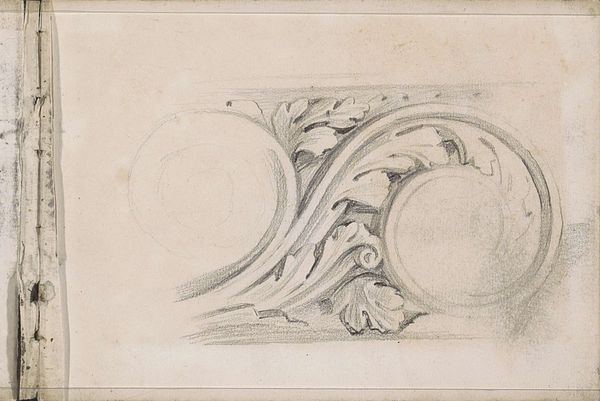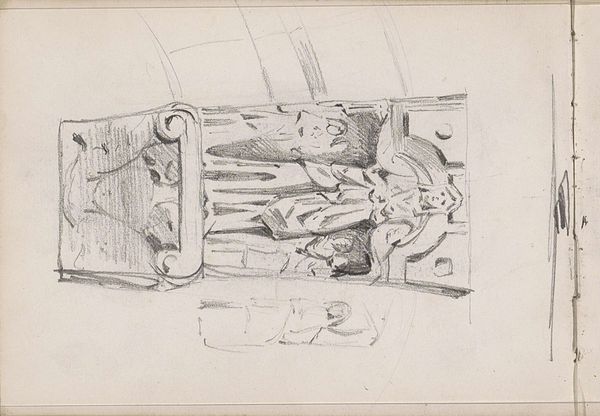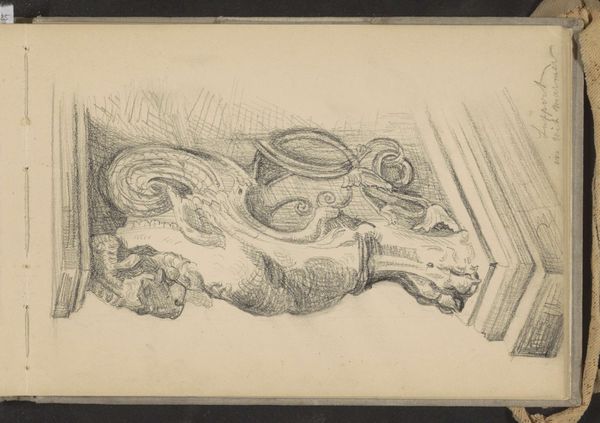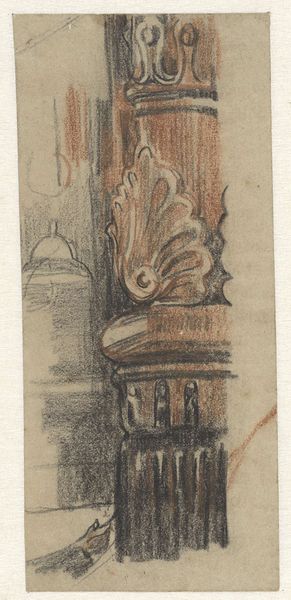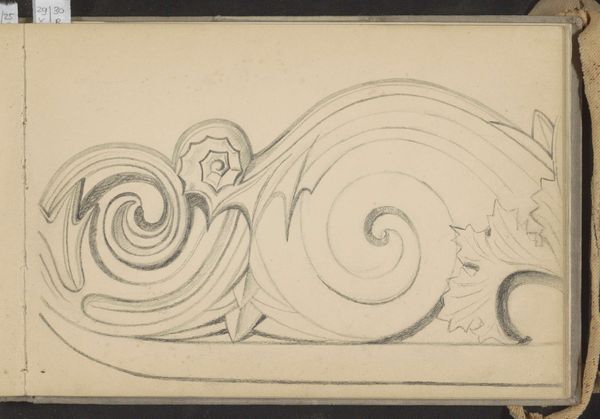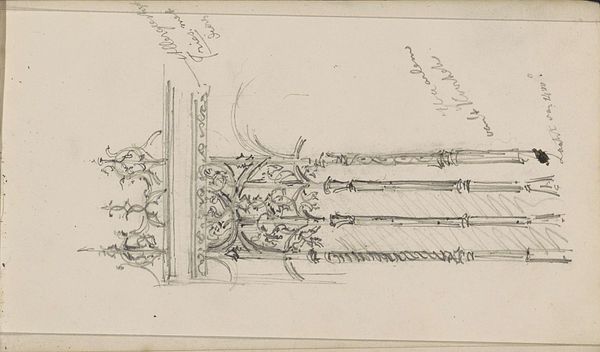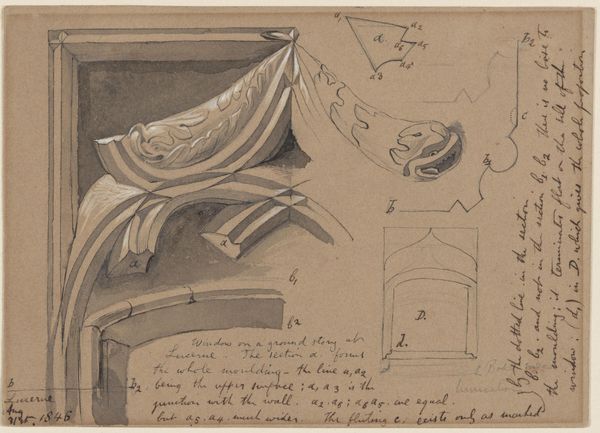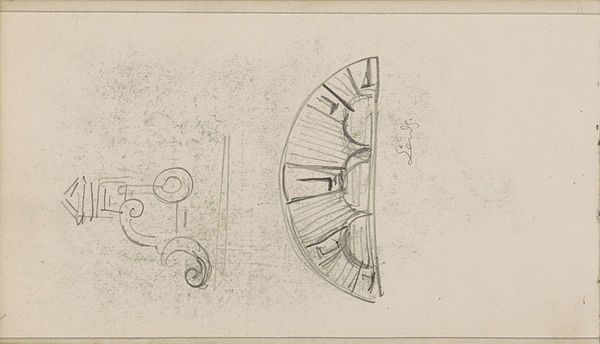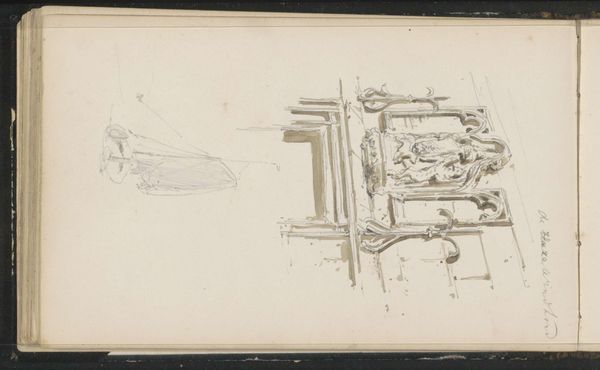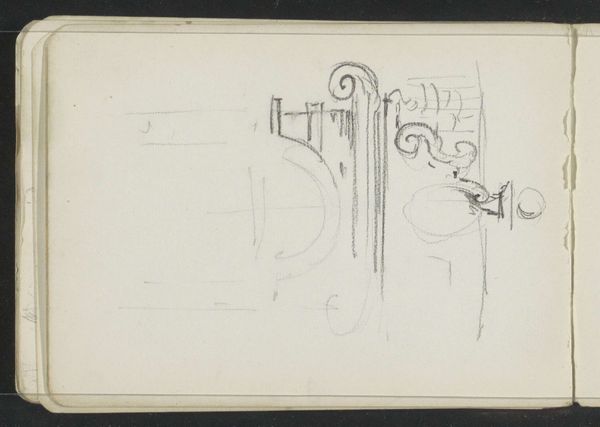
drawing, paper, pencil
#
drawing
#
medieval
#
pencil sketch
#
paper
#
form
#
romanesque
#
geometric
#
pencil
Copyright: Rijks Museum: Open Domain
Editor: Here we have Jac van Looij's "Romaanse kapitelen," a pencil drawing on paper from around 1877 to 1880. It's a detailed study of Romanesque capitals, but rendered in such a stark, almost ghostly way. It makes me think about how we choose to preserve certain histories and forms while others fade. What do you see in this piece? Curator: It's a powerful visual document when we consider the socio-political context in which it was created. Van Looij, during this period, was contributing to a larger cultural project of defining and solidifying national identity through architectural heritage. The Romanesque style was often associated with a pure, perhaps even mythical, origin point for European civilization. How does this influence your perspective? Editor: I hadn't thought about it that way, but now I see that the act of sketching these capitals isn't just about architectural study, but about claiming a heritage, or even inventing one. Do you think there's a critical element to his realistic but ethereal style? Is he perhaps pointing out that he is working from second-hand source material, which is divorced from direct lived experience? Curator: Exactly! Consider the colonial undertones often present in such projects of cultural retrieval and preservation. Who gets to define "heritage," and whose stories are elevated? These architectural details become stand-ins for broader narratives about power and cultural dominance. To use Van Looij's sketch is also to participate in an aesthetic act in response to power dynamics, since the sketch transforms a claim of grandeur into a subtle interrogation through his chosen medium of ephemeral pencil on paper. Editor: That makes so much sense. Seeing this drawing not just as a rendering of an architectural element, but as an active participant in cultural narrative…it really shifts the way I understand art history. Curator: Precisely, and that's the value in understanding these intersectional narratives: revealing the complexities embedded within seemingly simple artistic choices. I hope our audience will also approach artworks armed with these sorts of critical questioning and empathy.
Comments
No comments
Be the first to comment and join the conversation on the ultimate creative platform.

